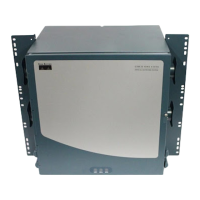CHAPTER
19-1
Cisco ONS 15454 Procedure Guide, R5.0
September 2005
19
DLPs A200 to A299
Note The terms “Unidirectional Path Switched Ring” and “UPSR” may appear in Cisco literature. These terms
do not refer to using Cisco ONS 15xxx products in a unidirectional path switched ring configuration.
Rather, these terms, as well as “Path Protected Mesh Network” and “PPMN,” refer generally to Cisco’s
path protection feature, which may be used in any topological network configuration. Cisco does not
recommend using its path protection feature in any particular topological network configuration.
DLP-A201 Apply a Lock On
Note To apply a lock-on to a protect card in a 1:1 or 1:N protection group, the protect card must be active. If
the protect card is in standby, the Lock On button is disabled. To make the protect card active, you must
switch traffic from the working card to the protect card (Step 4). When the protect card is active, you can
apply the lock-on.
Step 1 Use the following rules to determine if you can apply a lock-on:
• For a 1:1 electrical protection group, the working or protect cards can be placed in the Lock On state.
• For a 1:N electrical protection group, the working or protect cards can be placed in the Lock On
state.
• For a 1+1 optical protection group, only the working port can be placed in the Lock On state.
Step 2 In node view, click the Maintenance > Protection tabs.
Step 3 In the Protection Groups list, click the protection group where you want to apply a lock-on.
Purpose This task prevents traffic from being switched from one card or port to
another.
Tools/Equipment None
Prerequisite Procedures DLP-A60 Log into CTC, page 17-66
Required/As Needed As needed
Onsite/Remote Onsite or remote
Security Level Maintenance or higher

